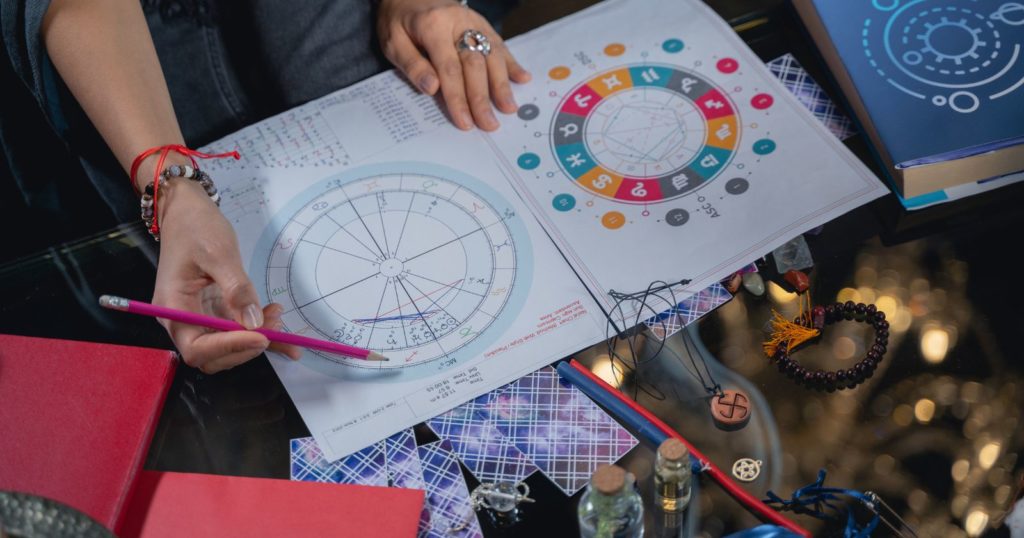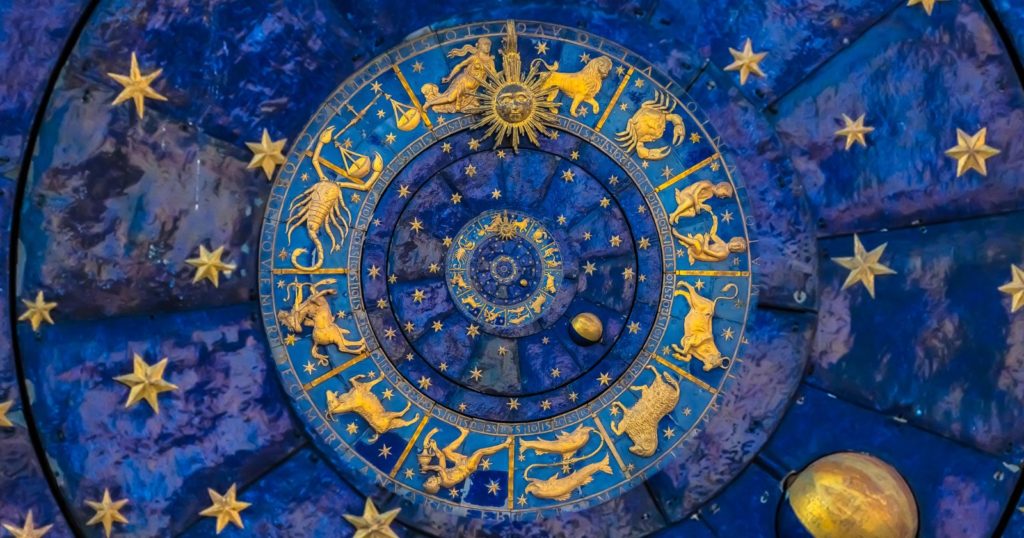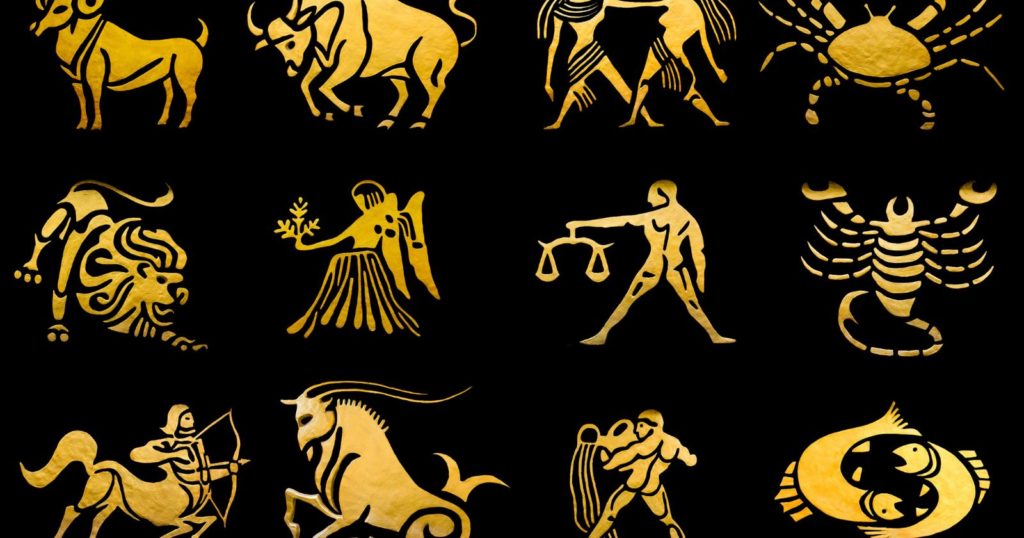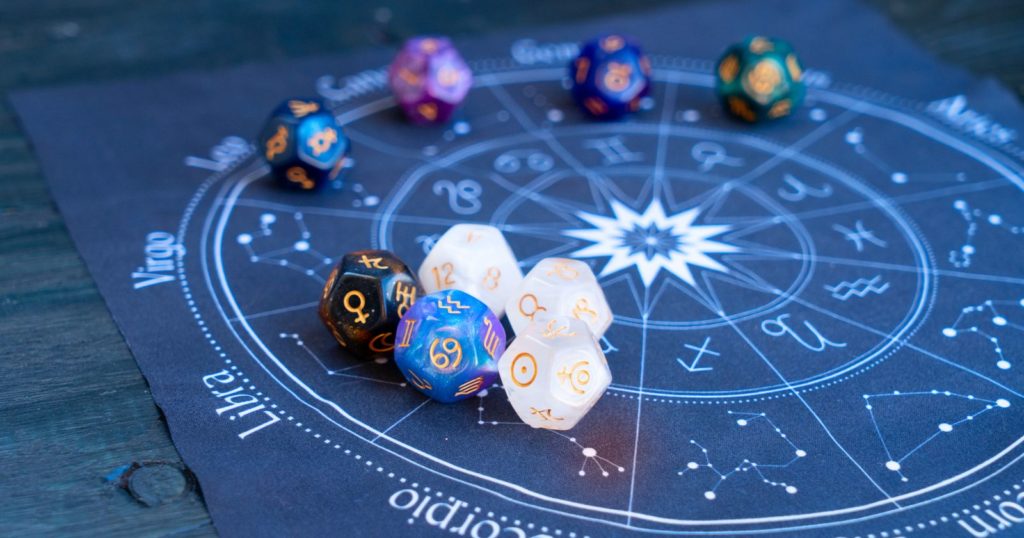From the moment I set foot into the world of astrology, I realized it was a realm filled with intrigue, discovery, and deeply personal revelations. Among the many astrological tools and concepts, one stood out like a beacon of profound insight—the astrology chart. As an expert, I’ve come to perceive this cosmic map not merely as a confluence of stars and planets, but as a soulful narrative of an individual’s journey.
Growing up in a small town brimming with folklore and ancient wisdom, I was introduced to the realm of the stars at a very young age. It was my grandmother, a wise and unassuming woman, who initiated me into this enchanting world. Amongst her many tales, the ones about the stars, their alignments, and their intimate ties to our lives had me spellbound. Little did I know, these early years of stargazing and listening to celestial tales would eventually shape my professional journey.
My first encounter with an astrology chart was during my years of study under an esteemed astrologer—a mentor whose wisdom extended beyond textbooks, into the heart of experiential learning. I remember feeling overwhelmed yet fascinated by the complex symbology that seemed to tell a tale as unique as a fingerprint. Over the years, this fascination turned into a dedicated pursuit of understanding and translating this celestial language.
One particular instance, a consultation with a client facing significant life challenges, truly underscored the transformative power of astrology charts. In that session, we discovered how her Saturn return—a significant astrological event—was influencing her current situation. She found solace and strength in this cosmic perspective, reinforcing my belief in the astrology chart’s ability to guide, illuminate, and heal.
Today, my expertise involves aiding others to decode their astrology charts, to help them navigate life with greater self-awareness and clarity. As we delve into this star-dusted pathway, you’ll discover that mastering your astrology chart is not about predicting the future, but understanding the deepest parts of yourself and how you interact with the cosmos.
As we voyage through this cosmic journey together, we’ll unearth how to read your astrology chart, unveil its practical applications, and appreciate its relevance in the digital era. With every celestial body and every house in your chart, you will find a piece of your story waiting to be told—a narrative of growth, wisdom, and self-discovery. Here’s to charting your cosmos!
Understanding Astrology Charts: The Blueprint of Your Life
An astrology chart, also known as a natal chart, is a cosmic snapshot capturing the exact moment of birth as seen from the place you were born. Picture it as a celestial map that paints an intricate picture of the sky at your first breath, the unique imprint of the stars and planets at that moment, their positions, and their interactions.
Astrology charts have been revered since antiquity as mystical tools. From the Babylonians, Egyptians, to the Greeks, many ancient civilizations held a profound belief in the synchronicity between celestial movements and earthly events. They observed the sky, recorded planetary movements, and deduced patterns that seemed to correlate with terrestrial phenomena. This ultimately led to the creation of astrological charts, which served as navigational tools for life. Today, we see a resurgence of interest in astrology charts as more and more people seek guidance, understanding, and a sense of place in the universe.
So, how does this cosmic map function as the blueprint of your life? An astrology chart is divided into twelve sections or ‘houses,’ each representing a distinct area of life, such as personal identity, communication, relationships, career, and more. Within these houses reside the ten planets and the twelve zodiac signs, each carrying specific symbolic meanings.
The planets embody various facets of our psyche. For example, the Sun represents our ego and identity, the Moon mirrors our emotional world, and Mercury symbolizes our mental processes and communication style. These planetary placements in different zodiac signs provide a nuanced understanding of our core characteristics. So, if your Sun is in Leo, it implies a fiery, dramatic, and bold persona, while a Pisces Sun might suggest a sensitive, intuitive, and empathetic nature.
The zodiac signs, akin to twelve unique landscapes, influence how the planetary energies manifest. They color these energies with their attributes, from the ambitious Capricorn, the balanced Libra, to the passionate Scorpio. Each sign offers a different lens through which the planets express themselves.
Next, we have the ‘aspects,’ the angular relationships between the planets. They indicate how these planetary energies interact, where they harmonize, and where they might create tension. For instance, a ‘trine’—an angle of 120 degrees between two planets—suggests a harmonious flow of energies, while a ‘square’—a 90-degree angle—indicates potential challenges and conflicts.
The beauty of an astrology chart lies in its uniqueness—no two charts are exactly the same, just as no two individuals share the same life path. It takes into account not just when you were born (like horoscopes), but where and at what time, making it a highly personalized guide.
However, remember that an astrology chart is not about deterministic fate. It’s a tool for self-awareness and growth, a cosmic mirror reflecting our potential and highlighting our challenges. It’s about understanding our innate tendencies, acknowledging our potential, and consciously steering our life in a direction that aligns with our truest selves.
So, does a particular configuration in your chart imply an unchangeable destiny? Absolutely not! Think of it as a weather forecast. Knowing it’s going to rain can help you prepare—you can choose to carry an umbrella, change your plans, or even dance in the downpour! Similarly, understanding your chart equips you to navigate life’s storms and sunshine with informed grace and resilience.
Deciphering an astrology chart may seem daunting initially, with its complex symbols and connections. But once you begin to grasp its language, it unfolds like a rich, layered narrative—a story written in the language of the stars, waiting for you to turn the pages.
As we embark on this illuminating journey of unraveling the elements of an astrology chart, we’ll dive deeper into the significance of planets, houses, zodiac signs, and aspects. We’ll understand their roles in the chart and how they interrelate to form a comprehensive picture of your personal cosmic DNA.
Perhaps you’ve always felt a deep connection with your Sun sign but couldn’t entirely relate to its description. Or maybe certain patterns in your life have left you puzzled, seeking explanations. An astrology chart can offer insights into these facets and more. It opens doors to a richer self-understanding, encouraging you to introspect, transform, and evolve.
In essence, an astrology chart is akin to a cosmic blueprint of your life, a celestial guide to your strengths, challenges, passions, and potential. It’s a personalized road map for your journey, highlighting the paths that lead to your highest growth and fulfillment. It’s not about predestination but about empowering yourself with self-knowledge and navigating your life with cosmic consciousness.
With a firm grasp of your astrology chart, you become your own astrologer, gaining the ability to chart your life path with a sky full of stars as your guide. As we navigate deeper into the cosmos in the coming sections, prepare to experience the profound revelations that your astrology chart holds for you. As Rumi once said, “We come spinning out of nothingness, scattering stars like dust.” Get ready to catch those stardust whispers and decode their celestial messages that resonate with the symphony of your life.
Decoding the Sky: Elements of an Astrology Chart
The realm of astrology is akin to an intricately woven cosmic tapestry, where each thread contributes to the overall pattern. In the context of an astrology chart, these threads represent various elements such as the planets, the houses, and the zodiac signs, each bearing its unique symbolic resonance. Let’s delve into these elements to decode the complex yet captivating language of astrology.
Planets: The Characters of Your Cosmic Play
Firstly, we have the planets, the vital protagonists in your astrological narrative. Each of the ten planets, including the Sun and Moon (considered planets in astrological parlance), signifies different aspects of your personality and life experience.
For example, the Sun signifies your core self, your identity, and the Moon represents your emotional landscape, your instincts. Mercury is the messenger, governing communication and cognitive functions. Venus, the planet of love, represents how you relate and what you value, whereas Mars, the warrior planet, symbolizes how you assert and what drives you.
Meanwhile, the outer planets—Jupiter, Saturn, Uranus, Neptune, and Pluto—represent societal and generational influences. Jupiter, the planet of expansion, symbolizes growth and optimism, whereas Saturn, the taskmaster, teaches us about responsibility and limitations.
Zodiac Signs: The Twelve Cosmic Landscapes
Next come the twelve zodiac signs, the celestial landscapes that color the expressions of the planets. Imagine a character in a play set against different backdrops – their behaviors and interactions might shift according to the setting. Similarly, the planets (characters) express differently within each zodiac sign (backdrop).
For instance, Mars in the assertive Aries may express as an entrepreneurial drive or an inclination towards competitiveness, while Mars in the peace-loving Libra might manifest as a passion for justice and balance.
Houses: The Twelve Life Domains
Then we have the houses, the twelve sectors of the chart that represent various life domains. The first house speaks of self-identity, the seventh house of partnerships, the tenth house of career and public standing, and so forth.
The placement of planets in houses gives further insight into where and how their energies play out in our lives. For instance, if you have Venus (planet of love and relationships) in the tenth house (of career and public life), you might seek harmony in the workplace or have a career related to beauty or the arts.
Aspects: The Conversations Between Planets
The last key element to consider is aspects, the angular relationships between planets. Aspects reveal how these planetary energies interact—do they get along (harmonious aspects, like trines and sextiles) or do they challenge each other (tense aspects, like squares and oppositions)?
For example, a square aspect between Venus and Saturn might suggest difficulties or lessons in love or finance. In contrast, a trine between Sun and Jupiter could indicate a natural talent for leadership or a lucky streak in personal endeavors.
Learning to decipher these elements of an astrology chart is like learning a new language, one that speaks directly to our subconscious. As Carl Jung said, “We are born at a given moment, in a given place, and like vintage years of wine, we have the qualities of the year and the season in which we are born.”
By understanding the roles and interactions of these elements—planets, signs, houses, and aspects—we get a deeper insight into the unique imprint of the cosmos on our lives. With this knowledge, we can better understand our innate tendencies, our strengths, and the areas in our lives that call for growth and transformation.
This empowering process of self-discovery awaits us as we journey into the heart of our astrology chart, guided by the celestial language that maps our life path across the star-studded cosmic terrain.
However, remember that knowledge of astrology isn’t about predicting the future or blaming the planets for our challenges. It’s a tool for self-awareness and personal growth. Knowing our astrological predispositions helps us make more informed decisions, navigate life transitions with grace, and cultivate a more profound understanding of ourselves and others.
As an astrologer, I’ve often found that understanding the dynamics of an astrology chart allows us to tap into our potential, identify our blind spots, and illuminate pathways to self-improvement. The astrology chart serves as a celestial mirror, reflecting our deepest desires, innate talents, karmic lessons, and the themes likely to recur throughout our lives.
So, whether you’re looking to explore the mysteries of your personality, understand the dynamics of your relationships, or gain clarity about your career path, your astrology chart holds the key. By uncovering these cosmic layers, you start to see yourself as an integral part of the cosmos, interconnected with the universal rhythm and flow.
From ancient stargazers to modern-day astrologers, this celestial language has guided humanity in understanding the synchronicity between the cosmos and human experience. As we delve deeper into the astrology chart’s nuances, remember the wisdom of the ancient Hermetic axiom, “As above, so below.”
With this understanding, we can approach our astrology chart not as a set destiny but as a guide, a cosmic ally on our journey of self-discovery and personal evolution. The more we understand our astrology chart, the more we can align with our authentic selves and live a life that truly reflects our inner cosmos.
Navigating Your Chart: A Step-by-Step Guide
Diving into the world of astrology charts might feel like setting sail on an uncharted cosmic sea. But fear not, the stars have charted a course for us, and by following these simple steps, we’ll navigate through the depths of our astrology chart and uncover the celestial stories written in our cosmic blueprint.
Locate Your Planets: Begin your exploration by identifying the location of the planets on your chart. You’ll find the symbols for each planet spread across the circular chart. Knowing where each planet resides gives you the starting point for understanding how their energies manifest in your life.
Identify Your Zodiac Signs: Next, identify the zodiac signs that host your planets. Each sign imparts its characteristics to the planet within it, influencing how the planet’s energy expresses. For instance, Mercury in Gemini might manifest as quick-thinking and an agile communicator, while Mercury in Taurus could signify a methodical and steadfast thought process.
Understand Your Houses: The chart is divided into twelve houses, each representing a different area of life. Observe which houses your planets reside in. This will provide clues to the areas of your life that are most affected by the planetary energies.
Analyze the Aspects: Finally, look at the lines connecting the planets. These are the aspects—angles that planets form with one another. They show how these planetary energies interact, whether they are in harmony or in conflict, and how this dynamic influences your life.
By following these steps, you start to piece together your unique cosmic narrative, the celestial script written on the canvas of the sky at your moment of birth.
However, it’s important to note that navigating your astrology chart is a deeply personal and subjective journey. It’s not about finding definitive answers but about uncovering insights and patterns that resonate with your life experiences. Your chart is a guide, a celestial tool that helps you align with your authentic self, harness your potential, and navigate life’s ebbs and flows with cosmic awareness. As you delve into your chart, remember to hold space for your intuition. Let it guide you through the labyrinth of symbols and connections, for the language of astrology speaks to the intuitive self as much as it does to the analytical mind.
In my journey as an astrologer, I’ve witnessed the transformative power of this celestial tool. It has offered individuals a framework for understanding their inner world, their life’s purpose, and their relationships. Your astrology chart is a compass, guiding you towards self-discovery and personal growth. It’s your own personal piece of the cosmos, a stardust blueprint that whispers the secrets of your life. So, embark on this cosmic journey with an open mind and heart. Explore, reflect, and let the stars guide you towards a deeper understanding of yourself and your place in the cosmos.
The Astrology Chart in Action: Real-Life Applications
An astrology chart is not just an intriguing mix of celestial symbols and geometric patterns; it is a powerful tool with practical applications in various aspects of life. From self-understanding and personal growth to relationship dynamics and career guidance, let’s explore how an astrology chart can illuminate our path.
Self-Understanding and Personal Growth: The fundamental application of an astrology chart is in promoting self-understanding and personal growth. Your chart serves as a mirror, reflecting your innate characteristics, strengths, challenges, and potential for growth. For example, a prominently placed Venus might indicate a strong affinity for harmony and beauty, while a challenging aspect from Saturn might point towards lessons in discipline and patience. Understanding these planetary imprints can foster self-acceptance, self-improvement, and an overall sense of self-awareness.
Relationships and Compatibility: Astrology charts can provide insightful perspective into the dynamics of relationships. By comparing the charts of two individuals (synastry), we can explore the potential harmony or conflicts, shared goals, and growth opportunities within a relationship. Understanding these celestial dynamics can lead to greater empathy, communication, and harmonious interactions.
Career and Life Path Guidance: Your astrology chart can offer valuable insights into your career path and life purpose. For instance, a prominent 10th house (the house of career) or a strong placement of Saturn might indicate a calling towards leadership roles, while a well-aspected Neptune might suggest a career in the arts, healing or spiritual pursuits. Understanding these celestial pointers can guide you towards a fulfilling career that aligns with your authentic self.
In my career as an astrologer, I’ve found that the astrology chart serves as an invaluable tool in offering guidance and clarity. Whether it was an individual grappling with a career transition, a couple seeking to understand their relationship dynamics, or someone embarking on a path of personal growth, their astrology chart served as a celestial guide, illuminating the way.
Remember, though, the astrology chart is not a deterministic script but a symbolic language that speaks of potentialities. It provides a celestial perspective, broadening our understanding of ourselves and our life path. In the end, we are the authors of our life stories. Our free will and choices determine the final course, but understanding our astrology chart can certainly illuminate the journey.
As the noted astrologer Dane Rudhyar put it, “Astrology is a language. If you understand this language, the sky speaks to you.” So, let’s embark on this cosmic conversation and let the sky unfold its wisdom through our astrology chart.
Astrology in the Digital Era: Charting the Future
As we move deeper into the digital era, the age-old wisdom of astrology is being revitalized and revolutionized. Traditional methods of astrology charting, once labor-intensive and time-consuming, are now streamlined with cutting-edge technology.
Online astrology platforms and mobile apps have democratized access to astrology charts, making it possible for anyone with an internet connection to generate their chart with just a few clicks. These digital tools not only render accurate charts but also provide detailed interpretations, often tailored to individual users.
Moreover, the rise of social media has seen an explosion in astrology’s popularity. Astrology memes, horoscope updates, and insightful articles are shared daily, making astrology part of everyday conversation. Virtual astrology workshops and online consultation services are making astrology more accessible and interactive.
Artificial Intelligence is also making its mark in the astrological field. Advanced algorithms can interpret complex astrological data, offering personalized insights and forecasts. These technological advancements not only enhance the accuracy of astrological predictions but also make them more accessible to the public.
However, as astrology transitions into the digital age, it’s essential to maintain a balanced perspective. While technology can aid us in understanding our astrology chart, it should not replace the human element—our intuition, personal reflection, and lived experiences. Technology is a tool; it can provide information, but the wisdom lies within us.
As we move forward, the integration of astrology with digital technology promises exciting possibilities—enhanced accuracy, greater accessibility, and personalized astrological insights. As we chart the future of astrology in this digital era, the sky is indeed the limit.
Conclusion: The Astrology Chart as Your Life’s Compass
Astrology charts, like cosmic compasses, guide us through the vast and often perplexing terrain of our lives. They offer us a celestial perspective, illuminating our inherent strengths, potential challenges, and the karmic lessons we are here to learn. By understanding our astrology chart, we glean valuable insights into our personality, relationships, career aspirations, and personal growth journey.
In my experience as an astrologer, I’ve seen how these celestial blueprints can empower individuals to embrace their authentic selves, nurture harmonious relationships, and pursue fulfilling careers aligned with their life purpose. As we journey through life, our astrology chart serves as a guide, helping us navigate life’s twists and turns with greater awareness and cosmic wisdom.
So, let’s continue to explore this celestial language, embracing the wisdom of the stars. For, as the ancient philosopher Plotinus said, “The stars are like letters that inscribe themselves at every moment in the sky. Everything in the world is full of signs. All events are coordinated. All things depend on each other; as has been said, ‘Everything breathes together.'”
Recommended Resources:
- “The Inner Sky: How to Make Wiser Choices for a More Fulfilling Life” by Steven Forrest
- “Astrology, Karma & Transformation: The Inner Dimensions of the Birth Chart” by Stephen Arroyo
- “The Essential Guide to Practical Astrology” by April Elliott Kent
- “The Only Astrology Book You’ll Ever Need” by Joanna Martine Woolfolk
- “Astrology for the Soul” by Jan Spiller
- “The Twelve Houses” by Howard Sasportas




